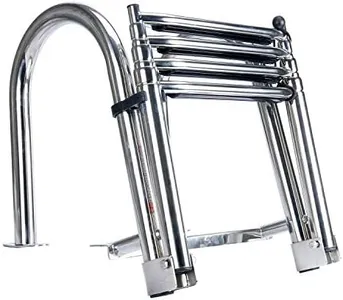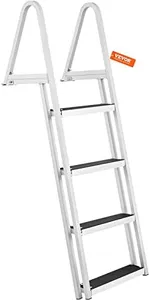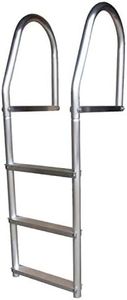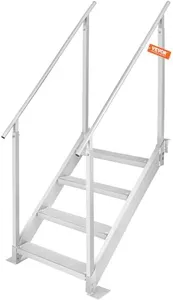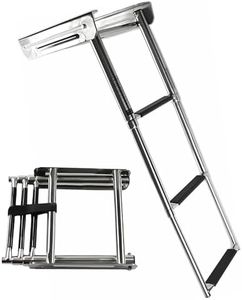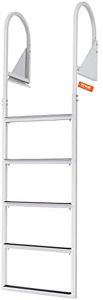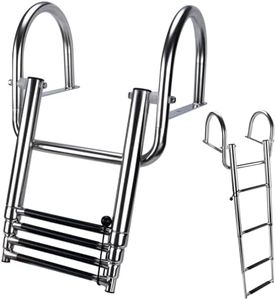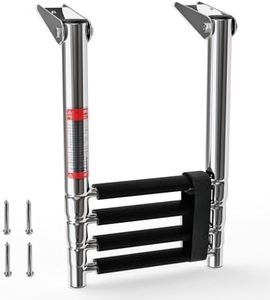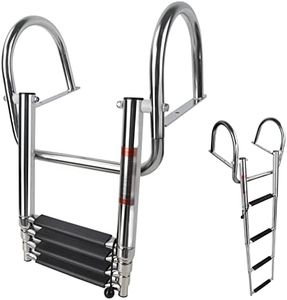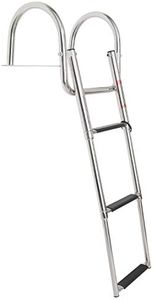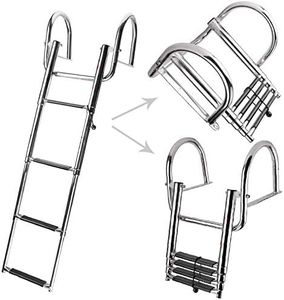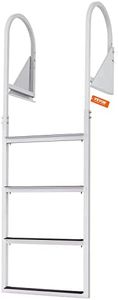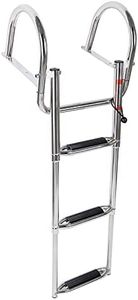We Use CookiesWe use cookies to enhance the security, performance,
functionality and for analytical and promotional activities. By continuing to browse this site you
are agreeing to our privacy policy
10 Best Dock Ladder
From leading brands and best sellers available on the web.Buying Guide for the Best Dock Ladder
Choosing the right dock ladder is important for safety, comfort, and durability around water environments like lakes or marinas. Think about who'll be using the ladder, how often it will be used, and where it will be installed. Consider convenience and access as well as weather and water conditions. A good dock ladder should be easy to use, sturdy in water, and simple to maintain.MaterialThe material of a dock ladder largely determines its durability and resistance to water and weather. Common options include aluminum, stainless steel, and plastic. Aluminum is lightweight, rust-resistant, and easy to move, making it a great choice for most residential docks. Stainless steel is heavier and even more resistant to corrosion, which is ideal for saltwater environments. Plastic ladders resist rust but may not be as sturdy for heavy use. Picking the right material comes down to your location: if you are in saltwater or harsh climates, lean toward stainless steel; for freshwater with lighter needs, aluminum or durable plastic can suffice.
Length (Number of Steps)The length or number of steps affects how easily swimmers can get in and out of the water. Ladders generally range from three to seven steps. A shorter ladder (three to four steps) works if your dock isn’t high above the water or the water is shallow. If your dock sits higher or the water level changes, opt for five or more steps so the ladder reaches well below the surface, making access easier for everyone. Consider who will be using the ladder—youngsters and older adults might need more steps for comfortable access.
Mounting StyleMounting style refers to how the ladder attaches to your dock—permanently fixed, flip-up, or removable. Fixed ladders are always ready for use and are sturdy, flip-up ladders can be lifted out of the water to reduce algae growth, and removable ladders can be taken away during off-season. Choose a fixed ladder if you want stability and always-ready access, flip-up for easier cleaning and longevity, and removable if you plan to store the ladder or protect it out of water.
Tread Width and Step DesignTread width and the design of the steps can make a big difference in safety and comfort. Wider, slip-resistant treads are easier and safer to use, especially with wet feet. Rounded or narrow steps can feel uncomfortable or even unsafe, especially for children or anyone with mobility concerns. Pick a ladder with broad, non-slip steps if comfort and safety matter most, and check that the ladder’s width matches its intended users (e.g., children, adults).
Weight CapacityWeight capacity tells you how much weight the ladder can safely hold. Standard dock ladders start around 250 pounds, but heavy-duty models support 300 pounds or more. Consider the largest person who might use the ladder—always choose a ladder with a capacity higher than expected to ensure long-term safety and reliability.
Ease of Installation and MaintenanceHow easy it is to install and maintain your ladder affects your long-term satisfaction. Some ladders come almost ready to use, while others require tools and extra steps for assembly and attachment. Maintenance varies by material and style—some need periodic cleaning to prevent buildup or corrosion. If you prefer quick setup and minimal upkeep, look for a ladder with simple mounting and low-maintenance materials.
